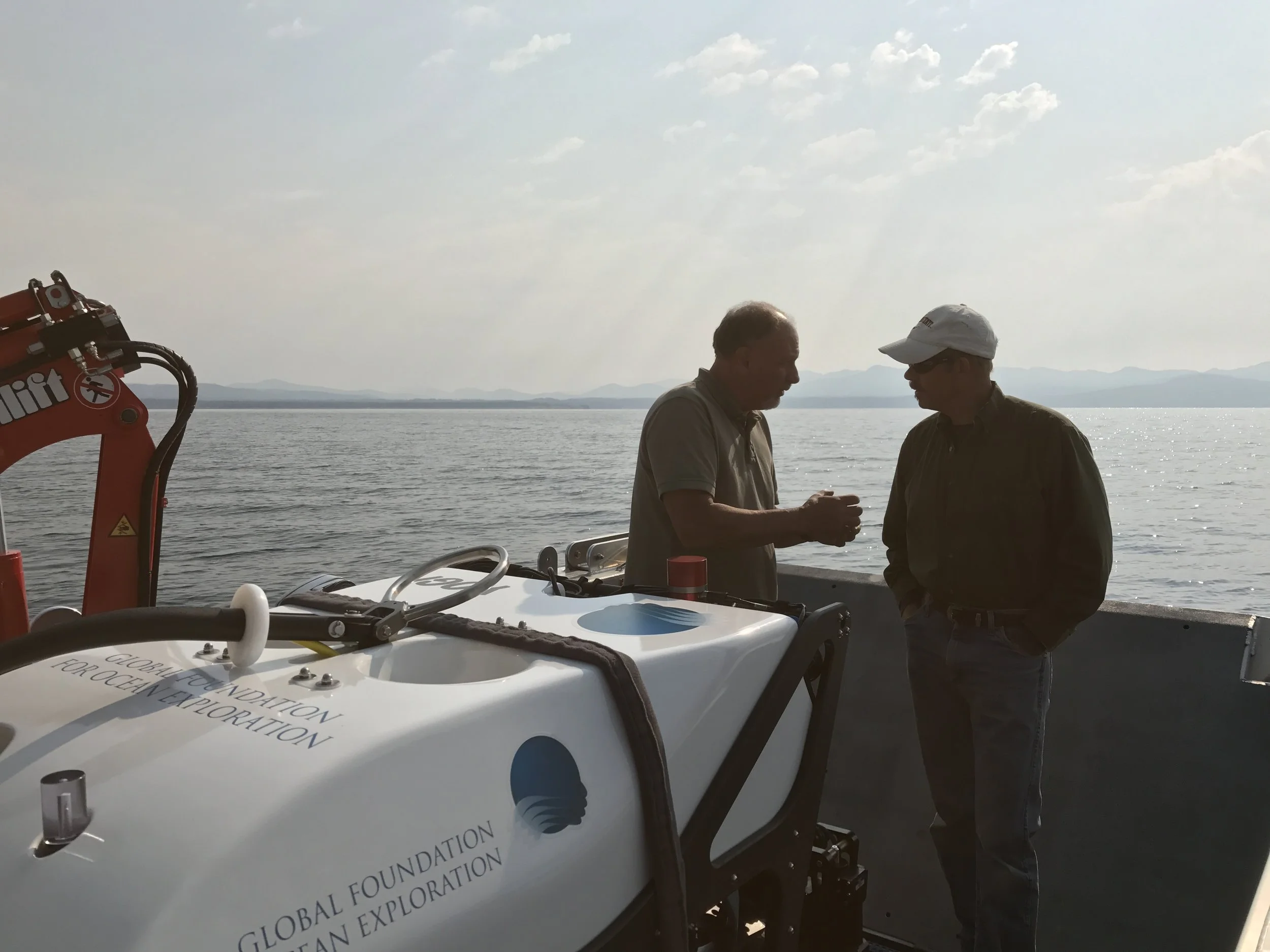Investigating the bottom of Yellowstone Lake, 2017
In August 2017 one of my postdoctoral advisors (Bill Inskeep) and I headed over to Yellowstone Lake to sample the hydrothermally heated mud and associated microbial ecosystems on the lake floor. It turns out this is likely the hottest location of all of the thermal expressions in Yellowstone National Park, but no one knows much about it because it is over 100 meters deep in the lake.
Here is a link to an even better blog post about this work by my friend, Louis Garcia from LSU.
Pat Shanks' trusty research van, complete with a bouquet of sediment core liners and gravity coring apparatuses.
This photo is from the robot named Yogi (operated by Dave Lovalvo, GFOE) who does the dirty work of diving deep in the lake and taking samples for us at hydrothermal vents.
Me, Bill Inskeep (middle), and Pat Shanks (left) floating on Yellowstone lake above some gurgling vents deep below us.
A map of Yellowstone lake and our target sampling area near Stevenson Island
Prof. Bill Inskeep and I building a protective platform for the back of the ship so we don’t damage it during the coring operation. (photo cred: Louis Garcia, LSU)





